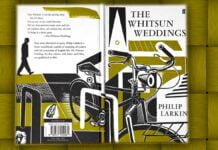Feminist theatre is a dynamic and politically engaged performance that seeks to challenge gender norms, expose patriarchal structures, and amplify women’s voices and other marginalised gender identities. Emerging primarily in the second-wave feminist movement of the 1960s and 1970s, feminist theatre is rooted in activism and artistic innovation, aiming to disrupt traditional theatrical conventions and create new forms of storytelling that reflect women’s lived experiences.
The origins of feminist theatre can be traced back to early feminist movements, but its most significant development occurred alongside the rise of modern feminist thought. Women had long been marginalised in theatre as practitioners and subjects of dramatic representation. Classical and mainstream theatre often portrayed women through the lens of male writers, reducing them to passive, secondary characters or reinforcing restrictive stereotypes. Feminist theatre emerged as a response to this misrepresentation, advocating for women’s stories to be told by women, for women, and about women.
At its core, feminist theatre seeks to challenge and deconstruct the patriarchal narratives that have historically dominated the stage. It critiques how traditional theatre has upheld male-centric perspectives in storytelling and industry practices. By shifting the focus to female subjectivity, feminist theatre offers alternative perspectives that question gender roles, power dynamics, and social expectations. Themes often explored in feminist theatre include women’s autonomy, the body, motherhood, sexual and reproductive rights, domestic oppression, violence against women, and intersectional identities.
One of the defining features of feminist theatre is its rejection of traditional narrative structures. Feminist playwrights often experiment with non-linear storytelling, fragmented narratives, and multiple perspectives to reflect the complexities of women’s experiences. Traditional theatre has historically followed Aristotelian dramatic structure, emphasising a single protagonist, conflict, and resolution. Feminist theatre often disrupts this model by using ensemble casts, collective storytelling, and open-ended conclusions, allowing multiple voices to be heard and questioning the notion of singular authority.
Performance techniques in feminist theatre are diverse and often break the fourth wall, directly addressing the audience to create a more interactive and engaging experience. This technique allows feminist theatre to function as art and activism, inviting spectators to reflect on gender and power dynamics critically. Monologues, personal storytelling, and verbatim theatre frequently bring real women’s voices and experiences to the stage, moving from abstract representations to authenticity and lived realities.
A key influence on feminist theatre has been Brechtian Epic Theatre, particularly its use of alienation effects to encourage critical engagement rather than passive emotional absorption. Many feminist playwrights employ similar techniques, such as direct audience address, self-conscious theatricality, and episodic structures, to ensure that feminist theatre remains a site of analysis and social change rather than escapist entertainment.
The works of pioneering female playwrights and theatre practitioners have shaped the feminist theatre movement. Caryl Churchill, one of the most influential feminist playwrights, is known for her groundbreaking plays such as Top Girls (1982) and Cloud Nine (1979), which examine themes of gender, class, and power through innovative narrative structures and satirical critique. Adrienne Kennedy and Ntozake Shange have contributed significantly by integrating themes of race, identity, and gender oppression into their theatrical works. Shange’s for colored girls who have considered suicide / when the rainbow is enuf (1976) is a defining piece of feminist theatre that blends poetry, dance, and drama to explore the struggles of Black women.
Eve Ensler’s The Vagina Monologues (1996) is another landmark feminist theatrical work. Based on interviews with women about their experiences, the play addresses taboos surrounding female sexuality, body autonomy, and gender-based violence, using storytelling as a form of empowerment and resistance. This production has since been performed worldwide and has played a crucial role in discussions about sexual violence and reproductive rights.
Feminist theatre is inherently intersectional, acknowledging that gender does not exist in isolation from other forms of oppression, such as race, class, sexuality, disability, and colonialism. Contemporary feminist playwrights and theatre-makers strive to create works that reflect diverse experiences of womanhood, moving beyond the predominantly white, middle-class perspectives that characterised early feminist theatre. Queer and transgender narratives are increasingly being incorporated into feminist performance, expanding the discourse to include non-binary and gender-nonconforming experiences.
One of the central concerns of feminist theatre is the representation of women in the theatre industry itself. Despite progress, women remain underrepresented as playwrights, directors, and producers in mainstream theatre. Feminist theatre companies and collectives have emerged to challenge this imbalance, creating spaces where women and non-binary artists can produce work free from the constraints of traditional male-dominated institutions. Companies such as Split Britches, Sphinx Theatre Company, and WOW Café Theatre have been instrumental in promoting feminist performance and ensuring that feminist voices remain heard.
The impact of feminist theatre extends beyond the stage. By engaging with political activism, social movements, and grassroots organisations, feminist theatre has become a tool for raising awareness and inspiring change. Many feminist theatre productions are performed in community spaces, schools, and activist gatherings, reaching audiences who may not have access to traditional theatre venues. Theatre is used not only as a means of artistic expression but as a platform for dialogue, resistance, and collective empowerment.
Feminist theatre continues to evolve, adapting to contemporary discussions on gender, sexuality, and power. In the digital age, new forms of feminist performance are emerging, including virtual theatre, multimedia performances, and immersive experiences that use technology to reach broader audiences. Feminist theatre festivals and networks are also growing, fostering collaboration among artists worldwide and ensuring that feminist perspectives remain vital in the performing arts.
Feminist theatre is a powerful artistic and political movement that challenges traditional narratives, advocates for gender equity, and creates space for diverse voices to be heard. By disrupting patriarchal structures, redefining storytelling, and integrating activism into performance, feminist theatre has transformed the theatre landscape and continues to inspire new generations of artists and audiences. As theatre-makers and scholars push boundaries further, feminist theatre remains an essential site for dialogue, resistance, and cultural transformation.





























